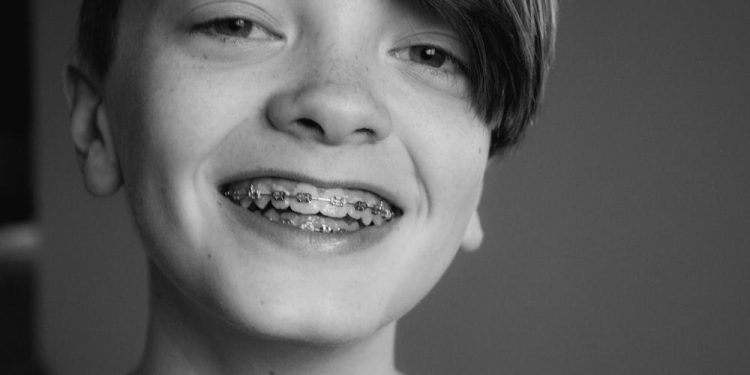For parents in Ohio, ensuring their children’s dental health is a top priority, especially considering that over 38% of Ohio children aged 3-5 have untreated dental caries, according to a recent report. Early orthodontic treatment plays a crucial role in not only preventing future dental problems but also in laying the foundation for a lifetime of healthy smiles. This proactive approach to dental care focuses on addressing orthodontic issues at a young age, allowing for timely intervention and correction. In this article, we will explore the benefits of early orthodontic treatment for children in Ohio, from preventing more severe dental issues to promoting proper jaw growth and improving overall oral health. Understanding the advantages of early intervention can help Ohio parents make informed decisions about their children’s dental care, ensuring a bright future for their smiles.
Table of Contents
1. Establishing a Healthy Foundation
Early orthodontic treatment sets the stage for a lifetime of healthy teeth and gums. By identifying and addressing dental issues in childhood, orthodontists can guide the development of the jaw and teeth, ensuring they grow in the correct alignment. This proactive approach helps prevent overcrowding, misalignment, and bite problems, reducing the likelihood of more complex and costly treatments in the future. Establishing a healthy foundation for oral development is a crucial first step in maintaining long-term dental health.
2. Tailoring Treatment to Individual Needs
Each child has unique dental needs—and this is where customized braces treatment comes in. This personalized approach ensures that the braces are not only effective in correcting dental issues but also comfortable for the child to wear. By focusing on the specific needs of each patient, orthodontists can achieve optimal results, setting the foundation for a healthy and beautiful smile that lasts a lifetime. Moreover, you can easily find orthodontists offering customized braces treatment in Columbus.
3. Improving Oral Hygiene
Early orthodontic treatment can significantly improve a child’s oral hygiene. Straight teeth are easier to clean, reducing the risk of plaque buildup, tooth decay, and gum disease. By correcting dental issues early on, children can develop better brushing and flossing habits, leading to a lifetime of good oral health. This preventive approach not only enhances the appearance of the smile but also contributes to overall well-being.
4. Enhancing Self-Esteem and Confidence
A beautiful smile can have a profound impact on a child’s self-esteem and confidence. Early orthodontic treatment can correct aesthetic issues such as crooked teeth or gaps, boosting a child’s self-image. Feeling good about their smile can improve social interactions and overall happiness, positively affecting their mental and emotional health. The psychological benefits of early orthodontic treatment are just as important as the physical ones.
5. Preventing Future Dental Problems
One of the primary benefits of early orthodontic treatment is the prevention of future dental problems. By addressing issues such as misalignment, overcrowding, or bite problems at a young age, orthodontists can prevent these conditions from worsening over time. This proactive approach can save children from experiencing pain, discomfort, and the need for more invasive treatments in the future. Early intervention is key to maintaining a healthy and functional smile throughout a child’s life.
6. Promoting Proper Jaw Development
Early orthodontic treatment is crucial for promoting proper jaw development in children. Anomalies in jaw growth can lead to bite problems, difficulty in chewing, and even speech impediments. By intervening at a young age, orthodontists can guide the growth of the jaw to ensure it develops in harmony with the teeth, preventing future functional issues and contributing to a well-proportioned facial structure.
7. Reducing the Risk of Tooth Damage
Misaligned or protruding teeth are more susceptible to damage from accidents or injuries. Early orthodontic treatment can help realign the teeth and reduce the risk of chipping, cracking, or losing them due to trauma. This preventive measure can save children from the pain and discomfort of dental injuries and the need for restorative treatments.
8. Improving Speech and Breathing
Orthodontic issues can affect a child’s speech and breathing patterns. Misaligned teeth or jaw discrepancies can lead to speech difficulties, while an improper bite can contribute to breathing problems, including sleep apnea. Early orthodontic treatment can address these issues, improving speech clarity and promoting healthier breathing, enhancing overall quality of life.
9. Facilitating Easier Future Treatments
When orthodontic problems are addressed early, any future treatments that may be needed tend to be less complex and shorter in duration. Early intervention can simplify the orthodontic process, making subsequent treatments more straightforward and less time-consuming. This can result in a more pleasant experience for the child and potentially lower costs for the parents.
10. Encouraging Positive Habits
Early orthodontic treatment can encourage children to develop positive dental habits from a young age. Regular visits to the orthodontist and adherence to treatment plans can instill a sense of responsibility for their oral health. This early focus on dental care can lead to lifelong habits that ensure the continued health of their teeth and gums.
Conclusion
The benefits of early orthodontic treatment for children extend far beyond straightening teeth. From preventing future dental problems to promoting proper jaw development and improving self-esteem, early intervention plays a crucial role in ensuring long-term oral health and well-being. Parents should consider the advantages of early orthodontic treatment and consult with a qualified orthodontist to determine the best course of action for their child. By investing in their child’s dental health early on, parents can help pave the way for a lifetime of healthy, beautiful smiles.


 Home
Home










